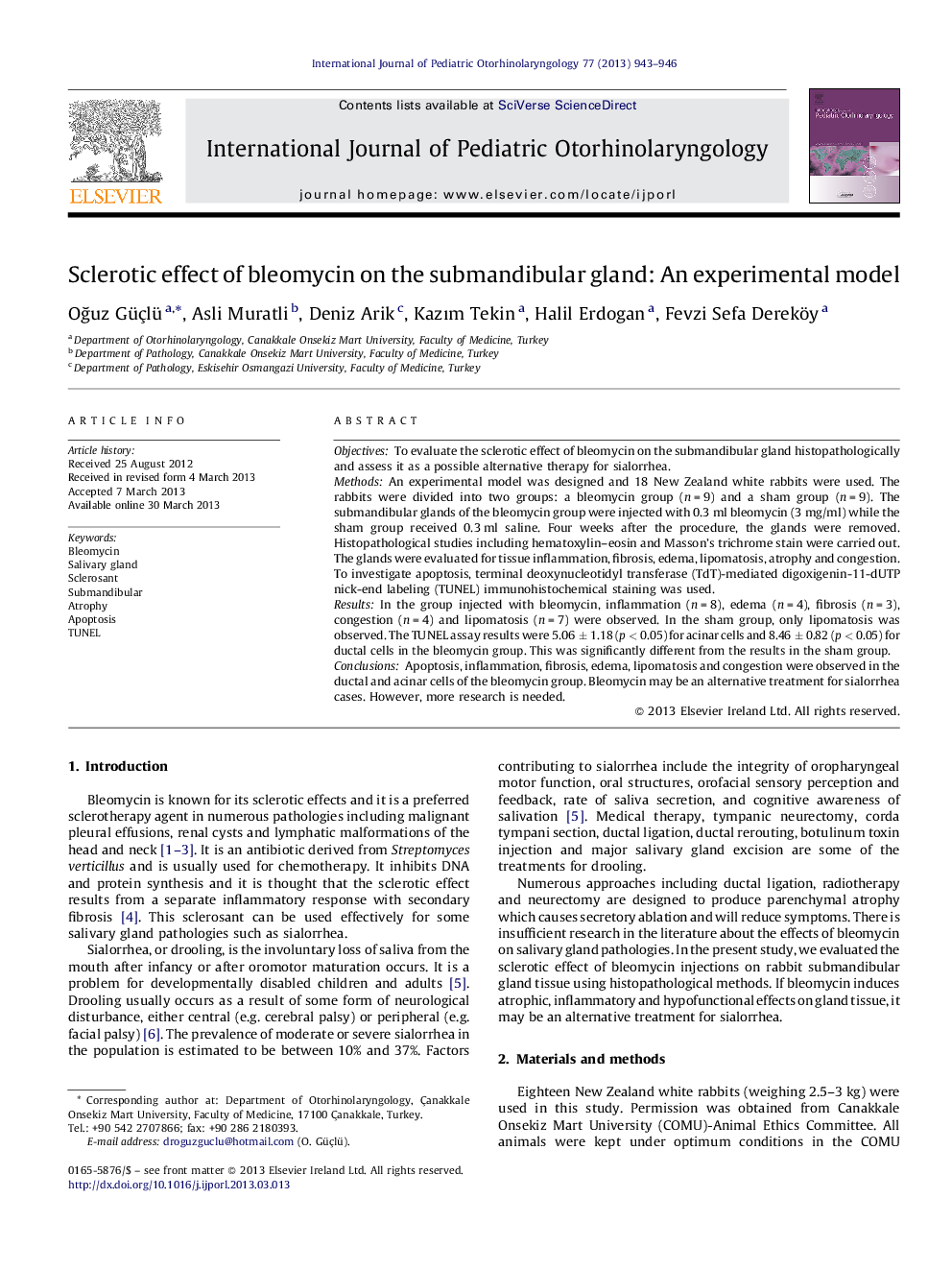| کد مقاله | کد نشریه | سال انتشار | مقاله انگلیسی | نسخه تمام متن |
|---|---|---|---|---|
| 6213686 | 1606019 | 2013 | 4 صفحه PDF | دانلود رایگان |
ObjectivesTo evaluate the sclerotic effect of bleomycin on the submandibular gland histopathologically and assess it as a possible alternative therapy for sialorrhea.MethodsAn experimental model was designed and 18 New Zealand white rabbits were used. The rabbits were divided into two groups: a bleomycin group (n = 9) and a sham group (n = 9). The submandibular glands of the bleomycin group were injected with 0.3 ml bleomycin (3 mg/ml) while the sham group received 0.3 ml saline. Four weeks after the procedure, the glands were removed. Histopathological studies including hematoxylin-eosin and Masson's trichrome stain were carried out. The glands were evaluated for tissue inflammation, fibrosis, edema, lipomatosis, atrophy and congestion. To investigate apoptosis, terminal deoxynucleotidyl transferase (TdT)-mediated digoxigenin-11-dUTP nick-end labeling (TUNEL) immunohistochemical staining was used.ResultsIn the group injected with bleomycin, inflammation (n = 8), edema (n = 4), fibrosis (n = 3), congestion (n = 4) and lipomatosis (n = 7) were observed. In the sham group, only lipomatosis was observed. The TUNEL assay results were 5.06 ± 1.18 (p < 0.05) for acinar cells and 8.46 ± 0.82 (p < 0.05) for ductal cells in the bleomycin group. This was significantly different from the results in the sham group.ConclusionsApoptosis, inflammation, fibrosis, edema, lipomatosis and congestion were observed in the ductal and acinar cells of the bleomycin group. Bleomycin may be an alternative treatment for sialorrhea cases. However, more research is needed.
Journal: International Journal of Pediatric Otorhinolaryngology - Volume 77, Issue 6, June 2013, Pages 943-946
